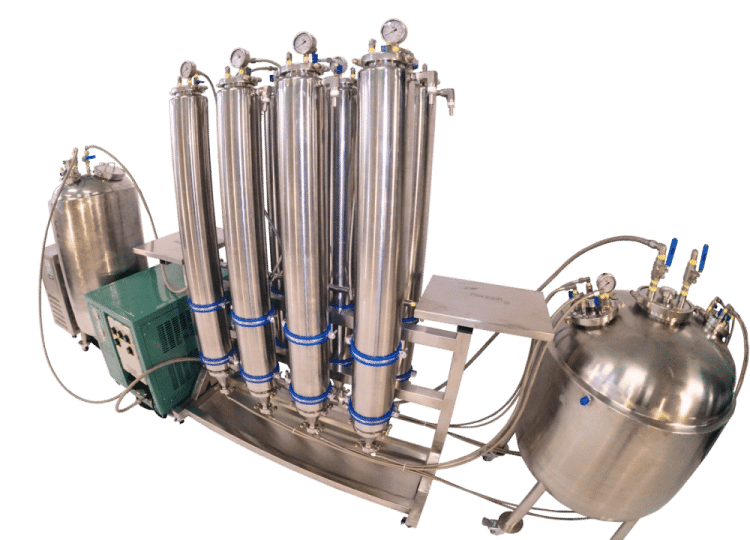It’s no secret that owning and operating in the cannabis extraction field can be a costly endeavor. For business owners that want to be able better gauge the actual costs of their cannabis extraction equipment, a Total Cost of Ownership (TCO) formula calculation is ideal.
The TCO breakdown relates to all manners of commercial extraction. This includes solvent-based techniques of mass production such as supercritical carbon dioxide (CO2) extraction, Soxhlet extraction, dynamic maceration, ultrasonic-assisted extraction (UAE), and microwave-assisted extraction.
The first criteria to consider is initial cost (I). This is the up-front purchase price of equipment such as chromatography systems, solvent recovery systems, heat exchangers, and recycling options. Typically, just a drop in the bucket as far as total cost, this cost can represent less than 10% of the TCO.
Operation cost (O) is tied to the cost to install and test machinery like the chromatographic and solvent removal equipment, as well as training employees to operate them. Training can cost business owners higher rates as the machinery acquired becomes more operationally-advanced.
Maintenance cost (M) includes service and upkeep that ensure proper working condition. Unexpected malfunctions of equipment are listed under this criterion.
Cost of downtime (D) relates to the labor costs of employees unable to execute job duties due to equipment malfunctions. This cost can also relate to indirect labor costs from any lost production, profitability, or additional management needed while unable to deliver product according to a set standard operating procedure.
Production cost (P) takes into consideration different levels of output and quality for the equipment in relation to any established metric of production activity your company sets. The industry has seen many companies concentrate on sustainability and quality, thus making something like supercritical CO2 extraction a wise business move that compensates for the higher initial cost of acquiring the equipment.
The final criteria in calculating a TCO is remaining value (R). This measurement documents the equipment’s value over the long haul and how it will compare to extraction market rates several years down the road.
The metrics featured above can then be calculated as the following: I + O + M + D + P – R = TCO.
Extraction companies can analyze the results from calculating the above TCO equation, which will lead to a sounder budget to project costs within the ever-expanding and fast-moving extraction landscape.
Image: https://www.pngegg.com/en/png-kqfbz












